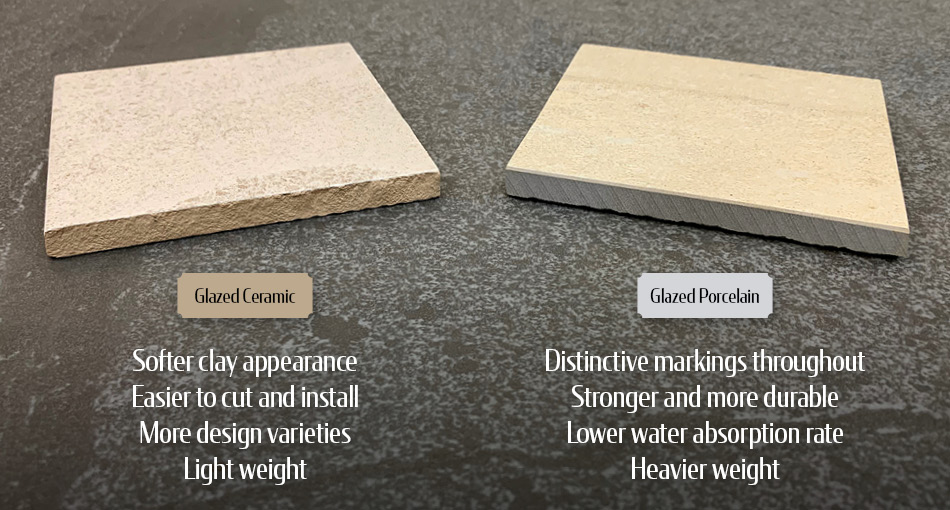Choosing the right flooring for your home can be a daunting task, especially when it comes to tiles. Ceramic and porcelain tiles are two popular options, but which one should you choose? Well, it ultimately depends on the specific room and its unique requirements. In this article, we’ll dive deeper into the differences between ceramic and porcelain tiles, helping you make an informed decision for your home.
Let’s start with ceramic tiles. These tiles are made from a mixture of clay, minerals, and water, which is then fired at high temperatures. Ceramic tiles are known for their versatility, as they come in a wide range of colors, patterns, and textures. They are also more affordable compared to porcelain tiles. However, ceramic tiles are porous and may absorb water, making them more prone to cracking and staining. Therefore, they are not recommended for high-moisture areas like bathrooms or outdoor spaces.
Now, let’s talk about porcelain tiles. Porcelain tiles are made from denser clay and are fired at higher temperatures, which makes them harder and more durable than ceramic tiles. They have a lower water absorption rate and are resistant to scratches, stains, and fading. Porcelain tiles are an excellent choice for high-traffic areas like kitchens or hallways. Additionally, they are suitable for outdoor use, as they can withstand extreme weather conditions. However, porcelain tiles tend to be more expensive than ceramic tiles, and their installation can be more challenging due to their density.
So, whether you choose ceramic or porcelain tiles, it’s essential to consider the specific needs of each room. In the end, you want flooring that not only looks great but also performs well in terms of durability and maintenance. Now, let’s explore the pros and cons of different flooring options for specific rooms in more detail in the upcoming article. When it comes to choosing the right flooring for your home, one common dilemma homeowners face is deciding between ceramic and porcelain tiles. Both options have their advantages and disadvantages, so it’s important to understand the differences between the two before making your decision.
Ceramic tiles are made from a mixture of clay, minerals, and water, which is then fired at high temperatures. They are known for their durability and affordability, making them a popular choice for many homeowners. Ceramic tiles are available in a wide variety of colors, patterns, and sizes, allowing for endless design possibilities. They are also relatively easy to install and can withstand high foot traffic.
On the other hand, porcelain tiles are also made from a mixture of clay and minerals but are fired at even higher temperatures. This firing process results in a denser and more durable tile that is less porous than ceramic tiles. Porcelain tiles are highly resistant to moisture, making them a great choice for areas that are prone to spills or high humidity, such as bathrooms and kitchens. They are also available in a wide range of colors, textures, and finishes, allowing for versatile design options.
One of the main differences between ceramic and porcelain tiles is their water absorption rate. Porcelain tiles have a water absorption rate of less than 0.5%, which means they are virtually impervious to water. This makes them an ideal choice for areas where water damage is a concern, such as bathrooms and kitchens. Ceramic tiles, on the other hand, have a higher water absorption rate, typically around 3-7%. While still relatively water-resistant, they may not be the best option for areas that are regularly exposed to moisture.
Another important factor to consider is the durability of the tiles. Porcelain tiles are harder and more resistant to wear and tear than ceramic tiles. They are less likely to chip or crack, making them a great choice for high-traffic areas. Ceramic tiles, while still durable, may be more prone to damage, especially in areas with heavy use.
In terms of maintenance, both ceramic and porcelain tiles are relatively easy to clean and maintain. Regular sweeping and mopping are usually sufficient to keep them looking fresh and new. However, it’s worth noting that the grout lines between the tiles may require more attention, as they can be prone to staining.
When it comes to cost, ceramic tiles are generally more affordable than porcelain tiles. The price difference can be attributed to the manufacturing process and the materials used. If you are on a tight budget, ceramic tiles may be the more economical choice.
In conclusion, both ceramic and porcelain tiles have their own unique set of advantages and disadvantages. When choosing between the two, it’s important to consider factors such as water resistance, durability, maintenance, and budget. If you are looking for a highly water-resistant and durable option, porcelain tiles may be the better choice. However, if budget is a concern or water resistance is not a top priority, ceramic tiles can still be a great option. Ultimately, the decision comes down to your specific needs and preferences.
